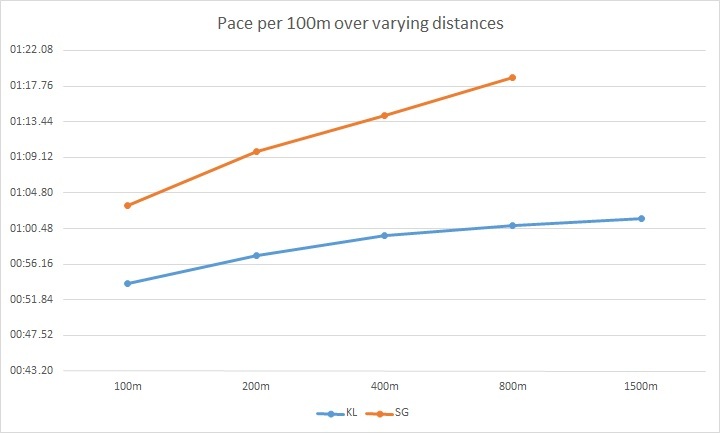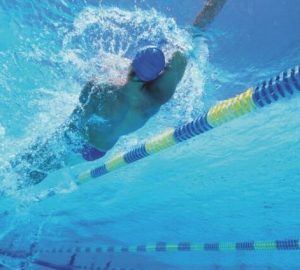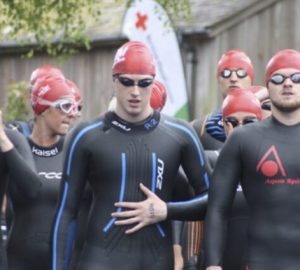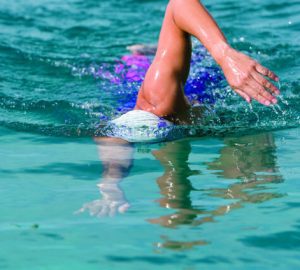Don’t try this if you have a fragile ego
For most of us, comparing our swim times with those of the best swimmers in the world is far from flattering, but it can be instructive. We decided to take a look at Katie Ledecky’s swim times and compare them with those of H2Open founder, Simon Griffiths.
We picked Katie as she is probably the world’s greatest distance freestyle (pool) swimmer at the moment – she won every race from 200m to 1500m at last year’s World Championships – and we sent Simon to the SE Regional Masters Championships in Crawley this weekend to get times for 100m, 200m, 400m and 800m. There was no 1500m on the programme, to Simon’s relief.
We weren’t particularly interested in absolute times (we know Katie would have finished the 800m more than 200m ahead of Simon – or four lengths of a 50m pool). Instead, we wanted to see the pace at which they swim and how that varies with distance. This is what we’ve done in the table below.
Apart from some obvious things such as Katie swimming every 100m in a 1500m faster than Simon can swim 100m (with a dive!) we mostly wanted to see the final four columns. What you notice about Katie’s swimming is, not only is she much faster, her pace declines very little with distance. So, for example, when Katie goes from 100m to 200m, she only slows down by 3.47s per 100m (6.45%) whereas Simon slows down by 6.59s or a massive 10.42%. The same thing is repeated with each step up in distance.
The next thing we observed is that when Katie goes from 400m to 800m, her pace drops by half as much as it does when she moves from 200m to 400m, whereas Simon’s drops by the same amount again. The further Katie swims, it seems, the less her pace declines. This can be seen clearly in the graph below.

So what can Simon learn from this? We estimated that if Simon could achieve the same drop off in pace as Katie then he should be able to swim 200m in about 2:15, 400m in 4:50 and 800m in 10:05 – i.e. he could make big improvements without any increase in his 100m sprint speed by improving his endurance (so more long distance training).
Secondly, we would question whether his pace judgement could be improved on the 800m to achieve the same flattening of the line we see on Katie’s pacing. Is that just a case of more practice over the distance or the will power to suffer a higher level of pain? (Or was he just exhausted after a weekend of racing?)
We know a lot of you would like to be able to swim faster, and we typically measure speed by how quickly we can sprint, but what really matters for open water swimmers is not your top end speed but the pace you can sustain over a long distance. There are two ways to do this: improve your efficiency through better technique and building your endurance through long steady swims and threshold pace training. Although that sounds hard, it might be easier than trying to improve your absolute speed (although you may find that your sprint speed increases as your technique improves).
Incidentally, we’d love to see what Katie could do over 10km in open water. How would her technique and speed cope with the rough and tumble of a marathon swim? We think she’d do rather well.







